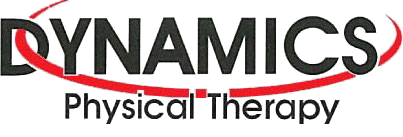Are you currently experiencing occasional or chronic jaw pain? Both types of discomfort may indicate an underlying problem that needs to be addressed. Untreated jaw symptoms can become long-term conditions, so it’s important to recognize the signs. In this newsletter, we’ll think about jaw pain and how to manage it.
Ma ny people suffer from jaw pain (pain in the lower or upper jaw, or in the lower face). Some may see it as a personal health issue to be endured without considering treatment in the hopes that the pain will eventually stop. However, if the discomfort is chronic, it is worthy of examination and treatment. Jaw pain can result from an injury/overuse, surgical side effects, or even illnesses. It can be related to the bones, joints, muscles, or nerves in the upper and/or lower jaw. Jaw pain may also develop when the lower jaw is moved in an abnormal manner while talking or chewing. However, the pain can also persist when the jaw is relaxed or held motionless. Jaw-related conditions can also manifest as painful discomfort in the teeth or mouth.
ny people suffer from jaw pain (pain in the lower or upper jaw, or in the lower face). Some may see it as a personal health issue to be endured without considering treatment in the hopes that the pain will eventually stop. However, if the discomfort is chronic, it is worthy of examination and treatment. Jaw pain can result from an injury/overuse, surgical side effects, or even illnesses. It can be related to the bones, joints, muscles, or nerves in the upper and/or lower jaw. Jaw pain may also develop when the lower jaw is moved in an abnormal manner while talking or chewing. However, the pain can also persist when the jaw is relaxed or held motionless. Jaw-related conditions can also manifest as painful discomfort in the teeth or mouth.
Some people can develop chronic jaw pain as a result of events such as orthodontic treatment or direct trauma to the jaw area. The pain results from damage to nervous tissue that is located in the jaw, or that which connects the jaw to major nervous control centers in the brain.
This is known as tempromandibular disorder (TMD). Other forms of TMD include chronic pain that is related to disorders of jaw muscles or joints. Other factors may be involved in your pain such as wearing dentures which can damage the interior jawbone over time, or stress in your work or home life that causes you to clench or grind your teeth. Some studies have found that certain forms of TMD may even be genetic.
The pain associated with TMD can be initiated by simply moving the lower jaw as normal. People with TMD are known to have significantly more pain than people without the condition as a result of these simple natural movements. Doctors often recommend medication to treat TMD. However, research has shown that specific, controlled, repetitive jaw motions, as taught by a physical therapist can significantly reduce pain in patients with TMD.
Masticatory myofascial pain (muscle pain disorder) is another condition in which the action of chewing brings on pain. Performing jaw exercises is beneficial toward improving this condition because it relieves discomfort by relaxing the jaw muscles and improving coordinated jaw function. Research has even shown that people with masticatory myofascial pain can manage their symptoms through this strategy without requiring any further treatment; although it may need to be a part of a long-term routine in order for it to take effect.
More specifically, performing individually tailored strengthening and stretching exercises daily can help relieve your jaw pain. One strengthening exercise is known as a resisted-opening technique, which involves opening and closing the mouth while putting a small amount of resistance on the chin. To begin, put one thumb under the chin and gently open the jaw downward against the thumb. As you push up gently with the thumb, slowly open the mouth and keep it open for about 2-3 seconds before closing the mouth. A useful stretching exercise entails pressing the edge of your tongue towards the roof of the mouth and slowly opening the mouth while making sure that the movement does not become painful. If you undergo physical therapy, your physical therapist will show you techniques specific to your needs that can reduce pain.
Many people with jaw pain may not consider physiotherapy to manage their condition, but they often forget that the jaw is a complex joint with muscles and soft tissue that may respond positively to rehabilitative treatment, just like any other condition. Our physical therapists at Dynamics Physical Therapy are trained to assess your TMD symptoms, and other areas like your neck that may be causing or contributing to your jaw pain. More importantly, they will recommend home exercises that can ease the pain you are experiencing while chewing, talking, or simply moving your jaw. Call Dynamics Physical Therapy to help manage your jaw pain today.
References
[1]. Lindfors E, Hedman E, Magnusson T, Ernberg M, Gabre P. Patient Experiences of Therapeutic Jaw Exercises in the Treatment of Masticatory Myofascial Pain: A Qualitative Study. Journal of oral & facial pain and headache. 2017;31(1):46-54.
[2]. Timarova G, Steno A. Late-onset jaw and teeth pain mimicking trigeminal neuralgia associated with chronic vagal nerve stimulation: case series and review of the literature. BMC neurology. 2017;17(1):113.
[3]. Alzarea BK. Temporomandibular Disorders (TMD) in Edentulous Patients: A Review and Proposed Classification (Dr. Bader’s Classification). Journal of Clinical and Diagnostic Research : JCDR. 2015;9(4):ZE06-ZE9.
[4]. Zhang Y, Shao S, Zhang J, Wang L, Wang K, Svensson P. Temporal summation and motor function modulation during repeated jaw movements in patients with temporomandibular disorder pain and healthy controls. Pain. 2017;158(7):1272-9.
[5]. Visscher CM, Lobbezoo F. TMD pain is partly heritable. A systematic review of family studies and genetic association studies. Journal of oral rehabilitation. 2015;42(5):386-99.
[6]. Kraaijenga S, van der Molen L, van Tinteren H, Hilgers F, Smeele L. Treatment of myogenic temporomandibular disorder: a prospective randomized clinical trial, comparing a mechanical stretching device (TheraBite(R)) with standard physical therapy exercise. Cranio : the journal of craniomandibular practice. 2014;32(3):208-16.


